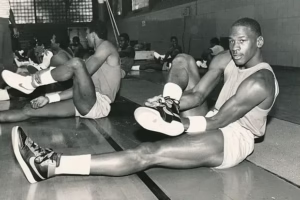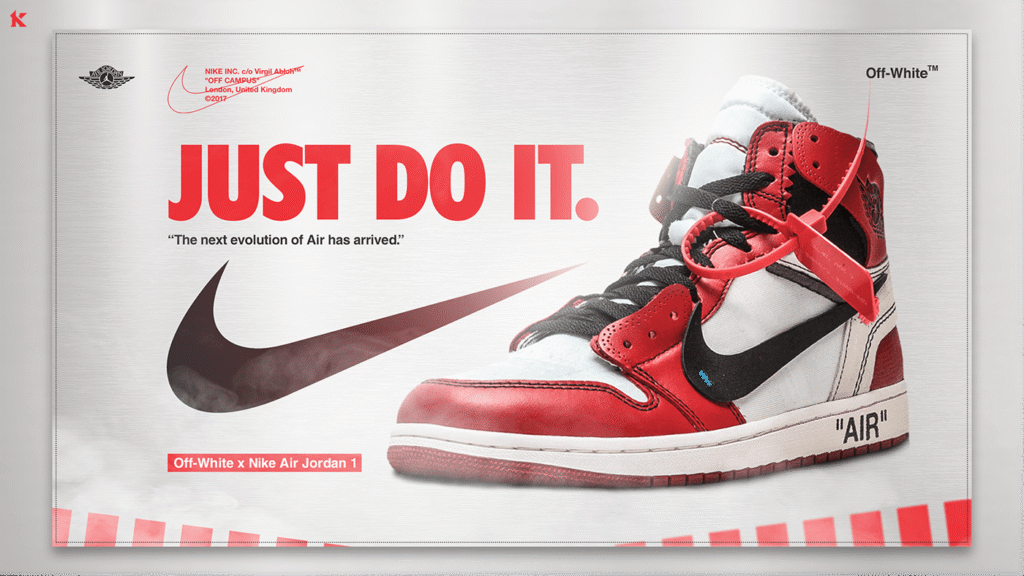Picture this: It’s 1984, and Nike is basically irrelevant in basketball. They’re the scrappy running shoe company that nobody takes seriously. Meanwhile, Converse owns the sport with Magic Johnson and Larry Bird, and Adidas is the European powerhouse that every serious athlete wants to wear.
Then comes this cocky kid from North Carolina named Michael Jordan.
The Ecclestone Era: F1 as Exclusive Club
The Setup: David vs. Two Goliaths
Nike’s position in basketball was laughable. They held a measly 18% of the basketball shoe market while Converse dominated with 58%. Adidas was the prestige brand that serious athletes coveted. Nike was… well, they made decent jogging shoes.
Jordan himself didn’t even want to meet with Nike. He was an Adidas guy through and through – had been wearing their shoes since high school. His agent had to practically drag him to the Nike meeting. The kid was so sure he’d sign with Adidas that he considered the Nike visit a formality.
But here’s where it gets interesting: Adidas completely fumbled the bag.
The Fumble That Changed Everything
Adidas treated Jordan like just another athlete. They offered him a standard deal – a flat fee, some free shoes, maybe a small bonus. Nothing special. Nothing that screamed “we believe you’re going to be the greatest of all time.”
Nike, on the other hand, was desperate. And desperate people do crazy things.
The Offer That Broke All the Rules
Nike executive Sonny Vaccaro had a wild idea: What if they offered Jordan something no athlete had ever gotten before? Not just money, but ownership. Not just a endorsement deal, but a partnership.
Here’s what Nike put on the table:
- $500,000 annual salary (massive for a rookie)
- $500,000 signing bonus
- Nike stock options
- A performance bonus
- And here’s the kicker: His own signature shoe line
Nobody had ever given an athlete their own shoe line before. Athletes endorsed existing models. They didn’t get their own brand within a brand.
The Gamble of a Lifetime
This wasn’t just unprecedented – it was financial suicide if it didn’t work. Nike was betting their entire basketball future on one unproven rookie. They were giving him Nike stock when the company was still relatively small. They were promising him royalties on every single Air Jordan sold.
Jordan’s parents were shocked. His agent was shocked. Hell, even Jordan was shocked.
But here’s the thing about desperate companies: they’re willing to rewrite the rules.
The Launch That Shook the World
The first Air Jordan launched in 1985, and the sports world lost its collective mind.
The shoe was different – bold, colorful, and unlike anything on the market. The marketing was revolutionary. Instead of showing the shoe, Nike showed Jordan flying through the air with Spike Lee’s “It’s gotta be the shoes!” campaign.
But the real genius was the business model. Every time someone bought Air Jordans, Michael Jordan got paid. Not just Nike – Jordan himself was building wealth with every sale.
The “Banned” Controversy That Made Millions
The NBA had strict uniform rules – shoes had to be primarily white. Jordan’s black and red Air Jordans violated this policy. So the league sent Nike a letter saying the shoes were banned from NBA games.
Most companies would have panicked. Nike? They saw dollar signs.
They created one of the most legendary ads ever: “On October 15, Nike created a revolutionary new basketball shoe. On October 18, the NBA threw them out of the game. Fortunately, the NBA can’t keep you from wearing them.”
But here’s the crazy part: Nike was perfectly willing to pay the fines. Every time Jordan wore the banned shoes in a game, Nike got hit with a $5,000 fine from the NBA. And Nike gladly wrote those checks, game after game.
Why? Because the marketing value was insane. Every fine generated millions in free publicity. Sports commentators talked about the shoes. Newspapers wrote articles. Kids across America wanted the “banned” shoes that were too cool for the NBA.
Nike essentially paid $5,000 per game to run the greatest guerrilla marketing campaign in history. They turned NBA fines into the most cost-effective advertising spend ever.
The rebellion narrative was perfect: Jordan wasn’t just wearing shoes – he was breaking rules, challenging authority, being different. And Nike was right there with him, paying the price for being revolutionary.
But the real genius was the business model. Every time someone bought Air Jordans, Michael Jordan got paid. Not just Nike – Jordan himself was building wealth with every sale.
The Numbers Don’t Lie
The results were immediate and staggering:
- Year 1: Air Jordan generated $126 million in revenue
- Year 2: $200 million
- By 1990: Jordan was making more from Nike than from basketball
But here’s the truly insane part: Today, more than 20 years after Jordan retired, he still makes around $130 million annually from Nike. His lifetime earnings from the brand are estimated at over $1.7 billion.
The Jordan Brand alone – not all of Nike, just Jordan – generates over $5 billion in annual revenue. That’s more than the entire GDP of some countries.
The Blueprint That Changed Everything
Nike’s Jordan gamble didn’t just create a successful shoe line – it created the modern sports business model. Here’s what they proved:
Athletes aren’t just endorsers – they’re business partners. Today’s superstars like LeBron James, Serena Williams, and Cristiano Ronaldo all have equity stakes in their deals.
Signature products beat generic endorsements. Every major athlete now wants their own line, their own brand identity.
Long-term partnerships beat short-term deals. Nike’s lifetime contract with Jordan continues to pay dividends decades later.
Brand storytelling matters more than product features. Nike didn’t sell shoes – they sold dreams, aspiration, and the idea that you could “Be Like Mike.”

The Lesson for Modern Business
Nike’s Jordan gamble teaches us something crucial about business strategy: Sometimes the craziest idea is the smartest move.
They broke every rule in the playbook:
- Gave away equity when they could have paid cash
- Bet everything on one person instead of diversifying
- Created a new business model instead of following the old one
- Treated an athlete like a business partner instead of a marketing tool
The result? They didn’t just win – they changed the entire game.
Today, Nike is worth over $200 billion. The Jordan Brand alone is worth more than most Fortune 500 companies. And it all started with one desperate company willing to try something nobody had ever done before.
The Ultimate Irony
Here’s the kicker: Adidas could have had all of this. They had the first shot at Jordan. They had the brand prestige. They had the basketball credibility.
But they played it safe. They followed the old rules. They treated Jordan like just another athlete instead of recognizing him as a once-in-a-generation talent who could transform their entire business.
Nike saw what Adidas missed: Jordan wasn’t just a basketball player – he was a brand waiting to happen. They didn’t just sign an athlete – they created a business empire.




